
Access Software, Inc. was an American video game developer based in Salt Lake City, Utah. Founded in November 1982 by Bruce Carver and Chris Jones, the company created the Beach Head, Links and Tex Murphy series, as well as Raid over Moscow. Access Software was acquired by Microsoft in April 1999, transitioning in name twice before being acquired by Take-Two Interactive in October 2004, receiving the name Indie Built. In January 2005, Access Software became part of Take-Two's 2K label. Following a poor financial performance at Take-Two, Indie Built was closed down in May 2006.
Links is a series of golf simulation video games, first developed by Access Software, and then later by Microsoft after it acquired Access Software in 1999. Microsoft also produced its own series of golf games based on Links, under the title Microsoft Golf. The Links series was a flagship brand for Access, and was continued from 1990 to 2003. The first game in the series, Links: The Challenge of Golf, won Computer Gaming World's 1991 Action Game of the Year award.

Links 2003 is a golf video game developed by Microsoft and published by Microsoft Game Studios. It is part of the Links series and was released for Windows in 2002. It follows Links 2001 and was followed by Links 2004. The game includes six courses, a course designer, and four professional golfers: David Toms, Jesper Parnevik, Sergio García, and Annika Sörenstam. Links 2003 introduces a golf swing method that works in real time as the player makes the shot.

Actua Golf 2 is a sports video game developed and published by Gremlin Interactive for PlayStation and Microsoft Windows. Development of the game was underway as of August 1997, and it was released in September 1997 in Europe, and in June 1998 in North America. A Sega Saturn version was planned, but eventually cancelled.
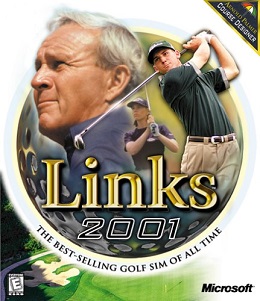
Links 2001 is a golf-based sports simulation game developed by Access Software and Microsoft Games Group and published by Microsoft. It is part of the Links series and follows Links LS 2000. It is the first game in the series to include a golf course designer, allowing the player to create custom courses. It also features Arnold Palmer, Sergio García, and Annika Sörenstam as playable golfers.

Links LS 1997 is a golf video game developed and published by Access Software for DOS. It was released in 1996, and is part of the Links video game series, following Links 386 Pro (1992). It was followed by Links LS 1998.
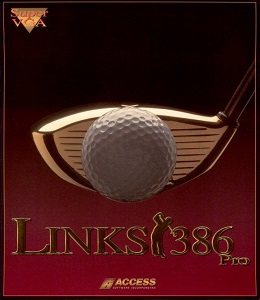
Links 386 Pro is a golf simulation sports game for MS-DOS released in 1992. It is part of the Links series, and was developed by Access Software as the follow-up to Links: The Challenge of Golf (1990). A Macintosh version, Links Pro, was released in 1994. An enhanced version called Links 386 CD was released for PC in 1995 that included audio comments by comedian Bobcat Goldthwait acting as the player's caddie, and an aerial flyby of each hole streamed from the game's CD-ROM. Re-branded versions of the game were also released for Microsoft Windows under the titles Microsoft Golf 2.0 (1994) and Microsoft Golf 3.0 (1996), part of the Microsoft Golf series.

Links LS 1998 is a golf video game developed and published by Access Software. It is part of the Links video game series, following Links LS (1996). It was released in 1997, and is the first game in the series to be published for Microsoft Windows. The game was well received, and was followed by Links LS 1999.
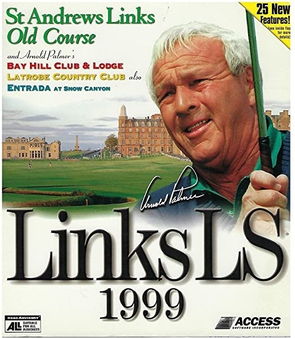
Links LS 1999 is a video game developed and published by Access Software for Microsoft Windows in 1998, and is part of the Links video game series.

Jack Nicklaus 6: Golden Bear Challenge is a golf video game developed by Hypnos Entertainment and published by Activision for Microsoft Windows. It is part of a series of golfing games named after golfer Jack Nicklaus, and is the first in the series to feature him as a playable golfer. Producer and designer Mike Franco, who produced previous games in the series, began working on the game in November 1997, when Jack Nicklaus 5 was released.

Links: The Challenge of Golf is a golf video game developed by Access Software. It was published for MS-DOS in 1990, followed by the Amiga in 1992. A Sega CD version, developed by Papyrus Design Group, was released in 1994. It is the first game in the Links series, and was followed by Links 386 Pro (1992). A Microsoft Windows version, titled Microsoft Golf, was released in 1992 as the first game in the Microsoft Golf series.

Microsoft Golf 2001 Edition is a 2000 golf video game developed and published by Microsoft for Microsoft Windows. It is the final game in the Microsoft Golf series, and the successor to Microsoft Golf 1999 Edition. It uses the same game engine as Links LS 2000 (1999), part of Microsoft's Links series of golf games.

Links LS 2000 is a golf video game developed by Access Software and published by Microsoft. It is part of the Links series and was released in 1999 for Microsoft Windows, and in 2000 for Macintosh. It was followed by Links 2001.

Microsoft Golf 1998 Edition is a 1998 golf video game developed by American studio Friendly Software and published by Microsoft for Microsoft Windows. It is the fourth game in the Microsoft Golf series, following Microsoft Golf 3.0. The game uses a revamped design that is substantially different from its predecessors.

Microsoft Golf 1999 Edition is a golf video game developed by American studio Friendly Software and published by Microsoft for Microsoft Windows. It was released in the United States in late 1998. It is the fifth game in the Microsoft Golf series, following Microsoft Golf 1998 Edition, which was also developed by Friendly Software.

PGA Championship Golf 1999 Edition is a 1999 golf video game developed by Headgate Studios and published by Sierra Sports for Microsoft Windows. The game includes eight golf courses and a golf swing method known as TrueSwing, which uses the movement of the computer mouse to simulate a golf swing in real-time as the player makes the shot. Also included is the ReadyPlay feature, allowing golfers in a multiplayer group to play at their own pace without waiting for others to finish their turn. The game was praised for its variety, including its TrueSwing and ReadyPlay features, although its golf commentary was criticized. The game was followed by a sequel, PGA Championship Golf 2000.
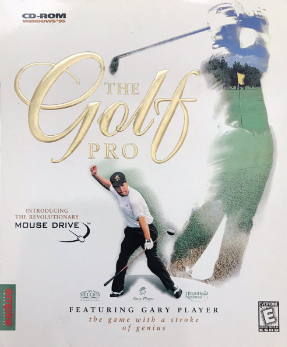
The Golf Pro is a 1998 golf video game developed and published by Empire Interactive for Microsoft Windows. The game features professional golfer Gary Player, as well as two golf courses and a mouse-controlled golf swing method known as Mouse Drive. The game was generally praised for its graphics, but criticized for its limited camera angles. By early 1999, The Golf Pro 2 had been released in the United Kingdom.
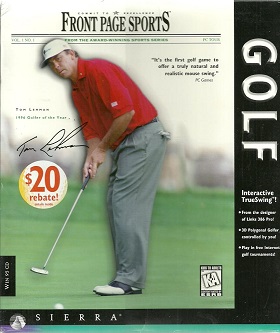
Front Page Sports: Golf is a golf simulation video game developed by Headgate Studios and published by Sierra On-Line for Microsoft Windows. The game was released in 1997, after nearly three years of development. It was particularly praised for its TrueSwing method, in which the player uses the computer mouse to simulate the golf swing.

Microsoft Baseball 3D 1998 Edition, also known as simply Microsoft Baseball 3D, is a sports video game developed by Microsoft and WizBang! Software Productions. It was released for Microsoft Windows in 1998. It received praise for its graphics, but criticism for numerous glitches and its varying difficulty. It was followed by Microsoft Baseball 2000 and Microsoft Baseball 2001.
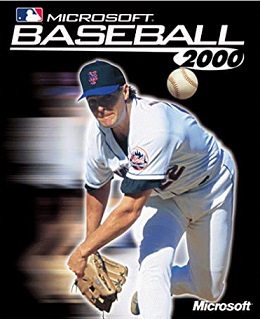
Microsoft Baseball 2000 is a sports video game developed by WizBang! Software Productions and published by Microsoft. It was released for Microsoft Windows in 1999, as an updated version of Microsoft Baseball 3D 1998 Edition. Critics considered the game to be an improvement over its predecessor. It received praise for its graphics and $20 price, but was criticized for containing various glitches. It was followed by Microsoft Baseball 2001.



















